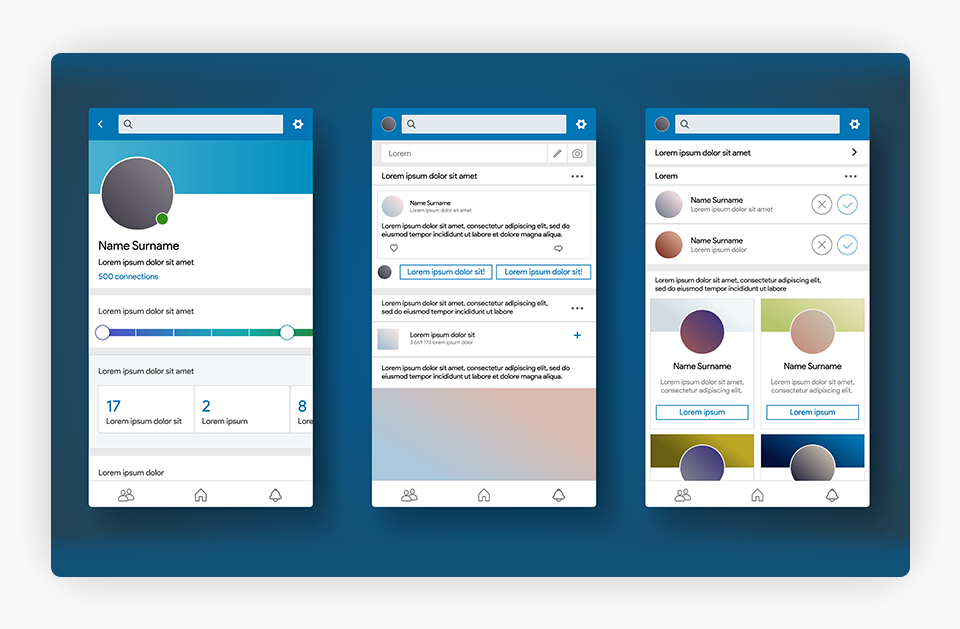We can’t send you updates from Justia Onward without your email.
Unsubscribe at any time.
From the earliest days of their careers, lawyers learn the importance of networking as a tool for practice growth. Check out this post for a few tips on leveraging your digital network and other online tools to bring in more referrals.
Love it or hate it, networking is often a crucial part of reaching your full professional potential. For lawyers, it may bring a wealth of opportunities, including the potential to grow your firm by leveraging your network for more referrals and new clients.
In recent decades, our society has become increasingly digital. This technological shift has in many ways changed the way we both work and network. Over the past two years, the COVID-19 pandemic has only increased the rate at which this change is occurring by largely halting in-person events for over a year. Depending on your location and the rate of community spread, you still may not be having in-person meetings, hearings, and events.
This means that networking continues to change. Keep reading for four tips on using digital tools to expand your network and continue to grow your practice.
1. Use LinkedIn

LinkedIn has built a strong reputation as the primary professional social network. Most people underutilize the power of this platform. Frequently, attorneys meet someone new in the industry, or a related industry, request to connect on LinkedIn, and leave it at that. If you are lucky, you might send a follow-up message or email, or perhaps meet again once or twice.
However, you can leverage LinkedIn to build your reputation as an expert in the legal field and reach new connections well beyond your regular circle by establishing yourself as an authority in a particular practice area or thought leader in the legal profession. Establishing this presence starts with building your own brand.
Use a professional photo for your profile. Friendly, smiling faces often get more engagement on social media sites. Add a cover photo that speaks to your brand. This may be something that includes your firm name and logo, or it may be a more generic image, such as a city skyline. Make your profile as complete as possible. Who you are and what you do should be apparent to someone visiting your profile.
Once you have built your profile, it is time to join the conversation. Find your voice and consistently use that tone. Create a content schedule, so that you remain consistently active on the platform.
Encourage participation and discussion from others in the LinkedIn community through polls and posts. Comment on news or trends you see in the industry. Respond to people and promote discussion in the comment feed when they share their opinions on a topic.
Promote blog posts you may write or interviews you may give by sharing them with your growing audience. Video is a great way to reach audiences too and you can do this in a way that speaks to your personal brand, as well as your law firm’s culture and way of working.
Remember that whatever you share, you want to be sure you are offering valuable, personal insights and contributing to the conversation while maintaining your tone. Building an audience takes time and will not happen overnight, but with patience, evaluation, and effort, it is possible. Once you have a larger audience, your network will continue to expand, offering you more opportunities to grow your firm.
2. Stay Top of Mind

One of the biggest mistakes one can make is allowing your connections to forget about you. This includes both your colleagues and your former clients. Happy former clients are one of the best referral sources you can have, while colleagues in different practice areas who are familiar with your expertise can also drive a lot of clients your way. You don’t want either of them to forget you are out there, ready and willing to accept clients when the opportunity presents itself.
We recommend utilizing email marketing as a core way of keeping in touch with these contacts. You may not reach everyone but having a regular newsletter from your firm show up in their inbox reminds them you are still practicing and keeps your law firm at the front of their mind. Thus, when they are asked for a referral, they are more likely to remember and recommend your firm.
Likewise, staying top of mind for your current contacts can help you reach new contacts. For instance, if a colleague reads valuable information in your newsletter about a change in the law, she is more likely to forward it to her coworker. In turn, this person may start following your practice or subscribing to your newsletter. Similarly, a former client may see an issue someone in their network is facing and share your information with them as well.
If you need tips on creating a law firm newsletter, check out this Justia Onward post.
3. Offer Valuable Online Resources

The pandemic may have changed the way we work, but it has not necessarily changed the way people search for information. Even before 2020, people were increasingly using Google and other search engines to find answers to their legal questions. From business matters to personal injury concerns and family law issues, people are very likely to turn to an online search as their first method of seeking answers.
When you offer valuable resources with answers to their questions, you are expanding your network to reach these potential clients. You certainly want to have some free, readily accessible information out there, such as blog posts on common questions in your key practice areas. However, you can also publish digital guides on common topics in your top practice areas that are behind a wall that requires contact form submission.

By keeping some of your resources just out of reach, you encourage people to share their information with your firm. At a minimum, this helps you build the marketing audience for key assets, such as your law firm newsletter, that can ultimately help your firm expand. As always, before you add these people to any sort of mailing list, be sure to check what is permissible under your local rules of professional responsibility governing attorney marketing.
Beyond just expanding your marketing audience, if readers/searchers find your guides and other content helpful, it increases your authority in your practice area. This further helps establish you as a leader in your field, which increases the likelihood people will turn to you when they need answers or will recommend your practice to someone they know with a legal question. It also increases the likelihood that people will continuously interact with your firm and seek more information from you over time.
4. Expand Your Community Connections

Do not limit your network to solely colleagues and former clients. By connecting with other professionals in your community, you expand your network and expand your reach. Consider CPAs, physicians, mortgage officers, and other professionals who frequently encounter situations that require an attorney’s guidance or involvement: for instance, real estate closings, malpractice concerns, or tax implications.
Building strategic connections with these professionals expands your network and gives you more opportunities to connect with new potential clients through them. Often, this is a give-and-take relationship. For example, if you are an estate planning and probate attorney, you may refer a client to a financial planner, while that financial planner may refer people to you who need to work on end-of-life legal documents.
To take these relationships one step further in a virtual world, consider hosting a joint webinar or informational event where both you and the other professional can share relevant information for consumers.
Final Thoughts: Why Do You Care?
Relationships are a very important part of practice growth for most attorneys. By leveraging digital strategies, you can build your professional brand and continue to expand your professional network, even in this new virtual age, with new contacts that may translate into more referrals for your practice in the future.